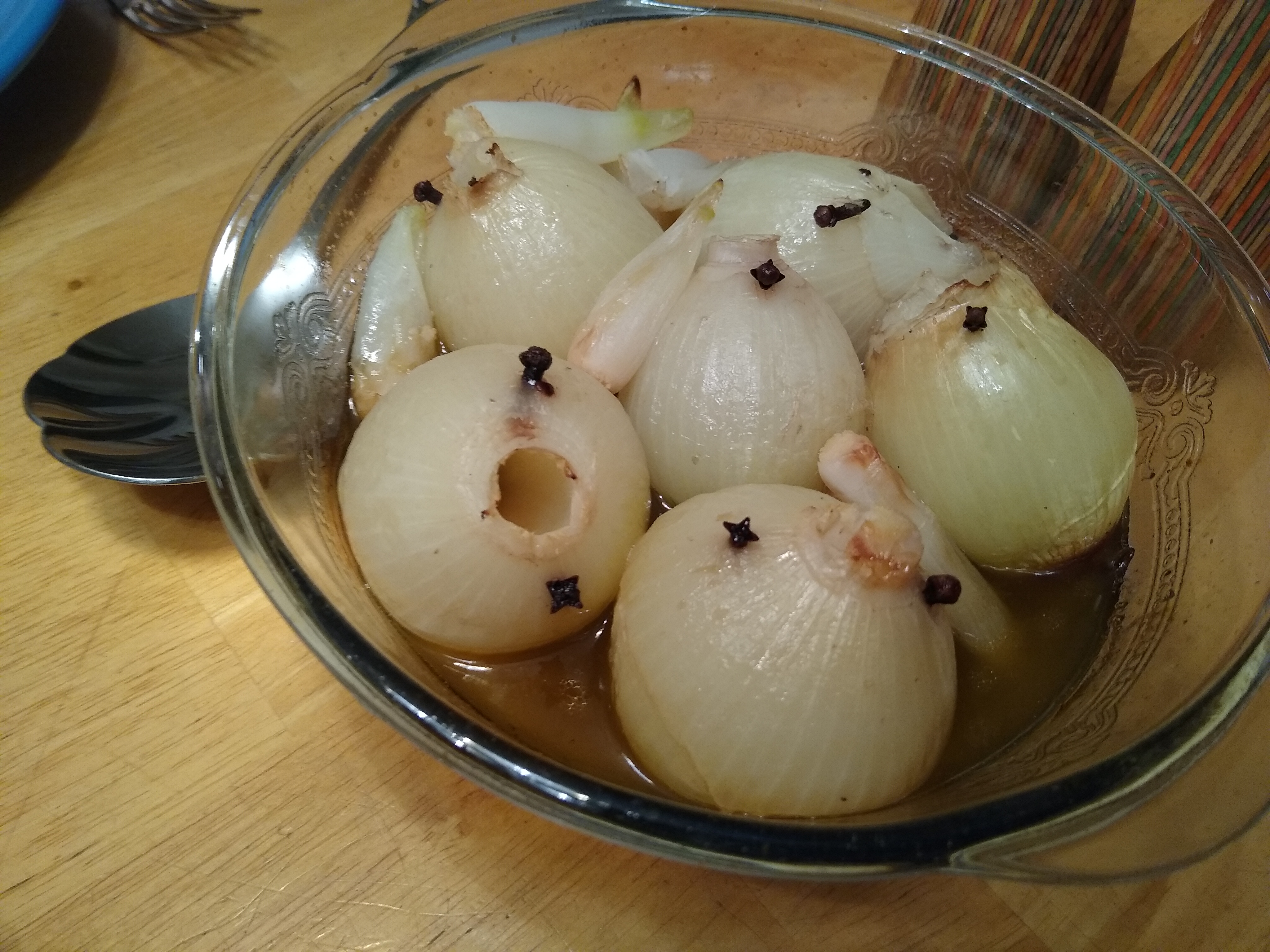 These clove-studded Cipolle di Napoli made a great side dish for the Pork Roast in the Florentine Style. I expect they'd be good with any pork or poultry dish that's not too highly seasoned.
These clove-studded Cipolle di Napoli made a great side dish for the Pork Roast in the Florentine Style. I expect they'd be good with any pork or poultry dish that's not too highly seasoned.
A funny thing happened: as the onions cooked and the water inside them expanded, the innermost part of the onions got squeezed out! You can see them in the photo, above the front left-hand onion like bunny ears and to the right of the front onion like a jaunty beret! The next time I make this, I will try cutting an X in the top of each onion to see if that helps.

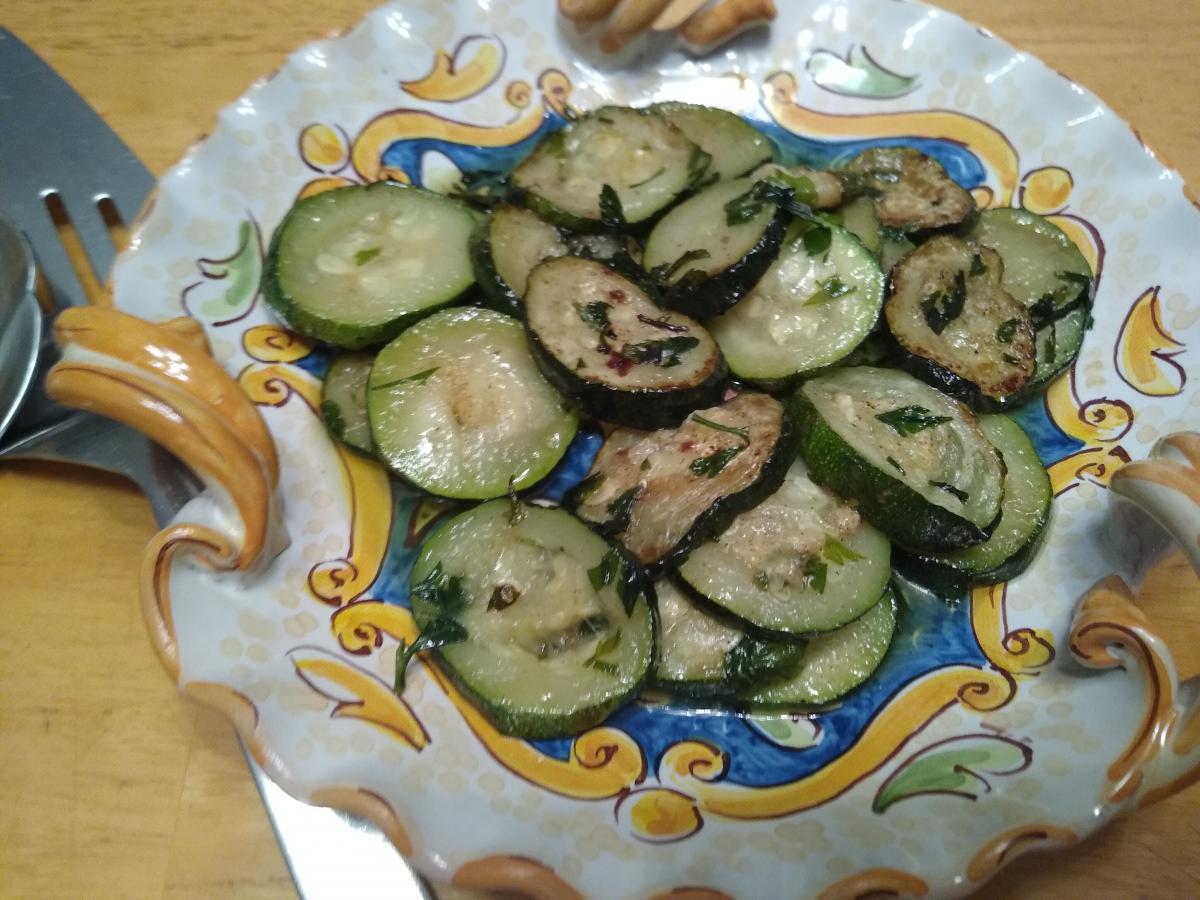 This is a tasty summertime dish for hot weather. The scapece part of the name derives from the Spanish escaveiche and ceviche (raw fish marinated in vinegar) but the Neapolitans use it to describe many things dressed with vinegar.
This is a tasty summertime dish for hot weather. The scapece part of the name derives from the Spanish escaveiche and ceviche (raw fish marinated in vinegar) but the Neapolitans use it to describe many things dressed with vinegar.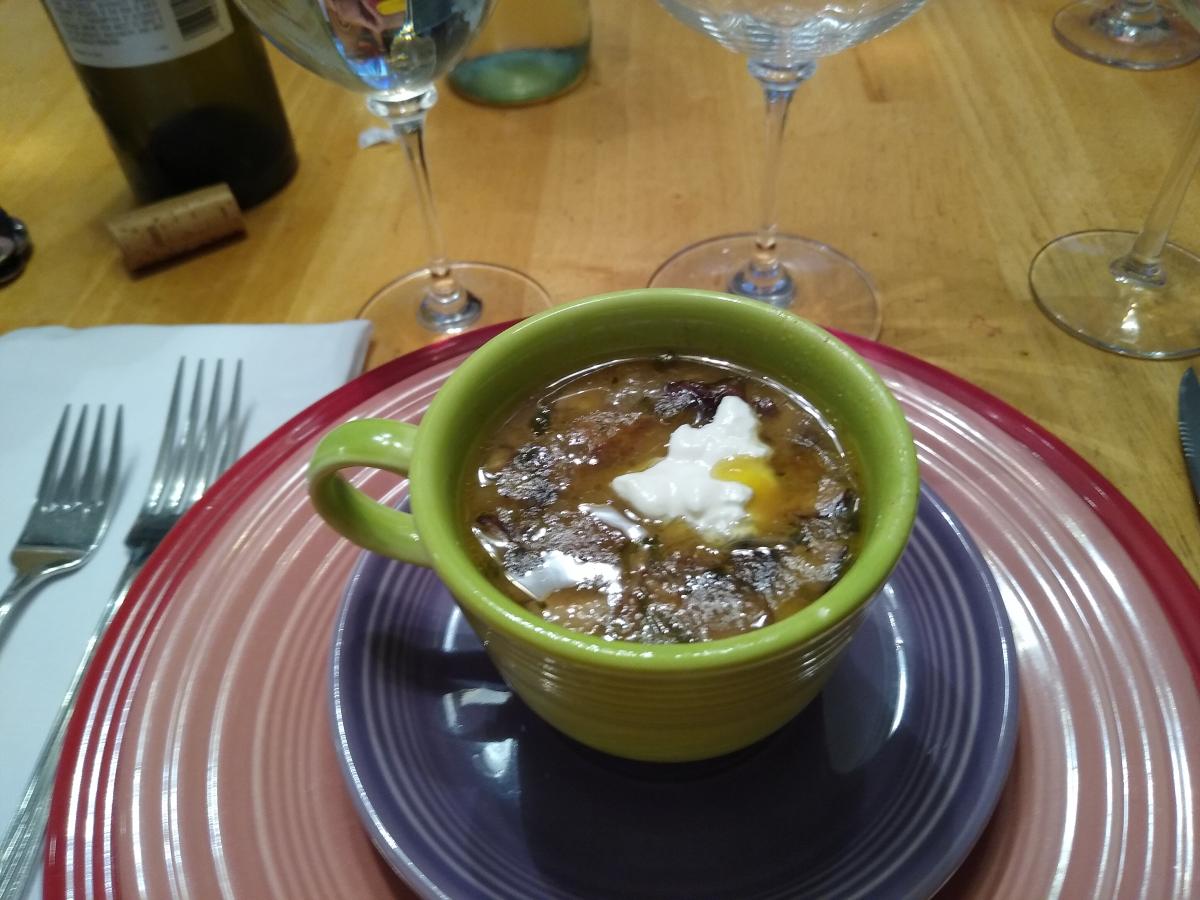 Here's a delicious mushroom soup with Italian sensibilities applied to an Austrian ancestor, from Trentino-Alto Adige in the Italian Alps on the Austrian border.
Here's a delicious mushroom soup with Italian sensibilities applied to an Austrian ancestor, from Trentino-Alto Adige in the Italian Alps on the Austrian border. 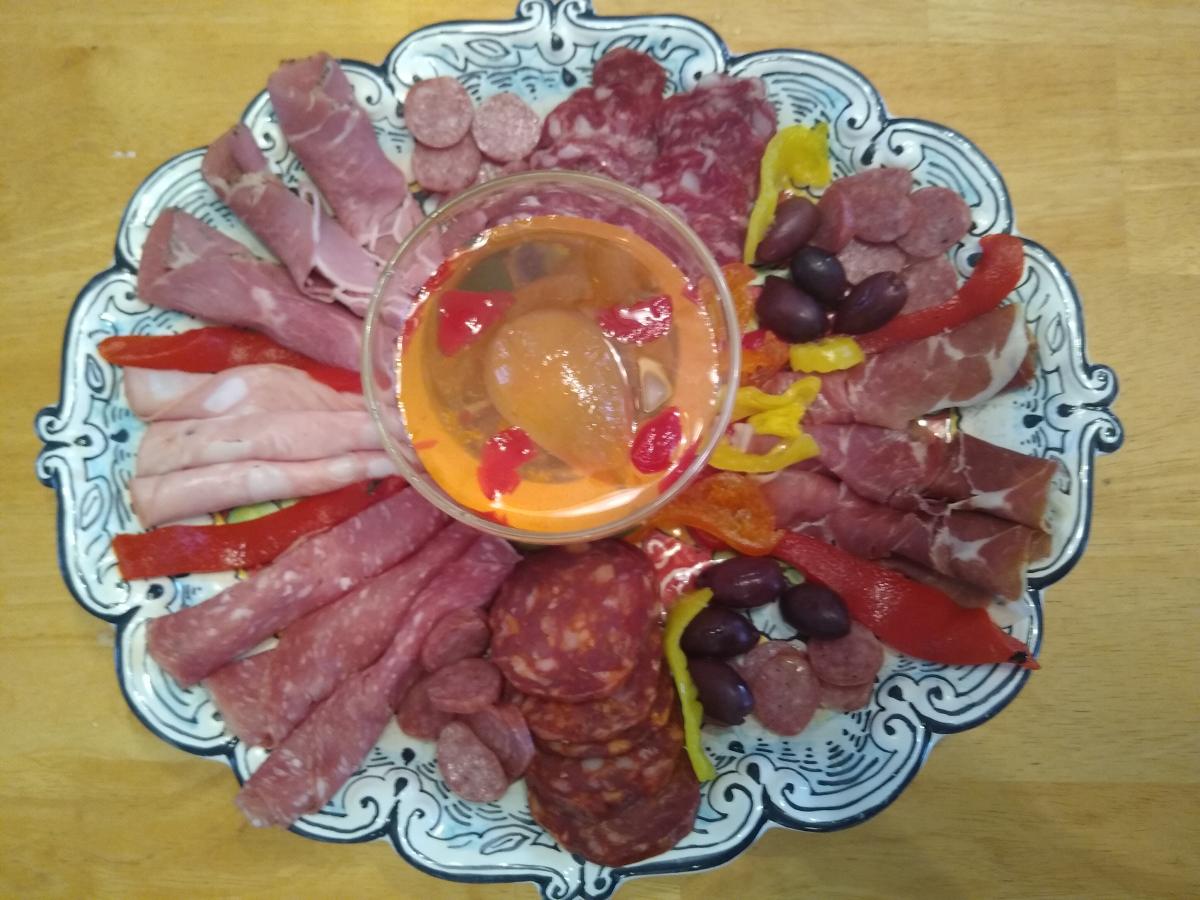

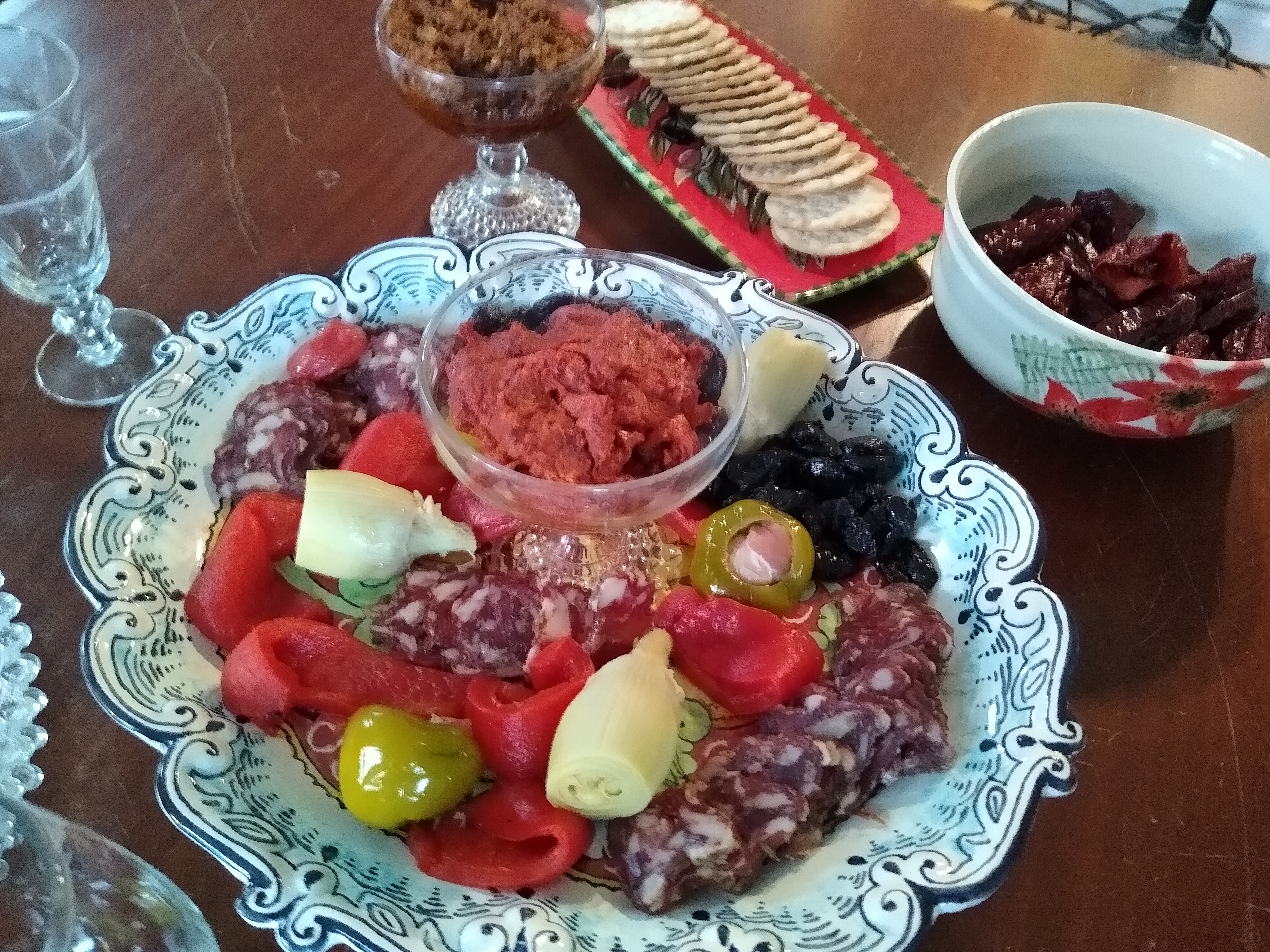
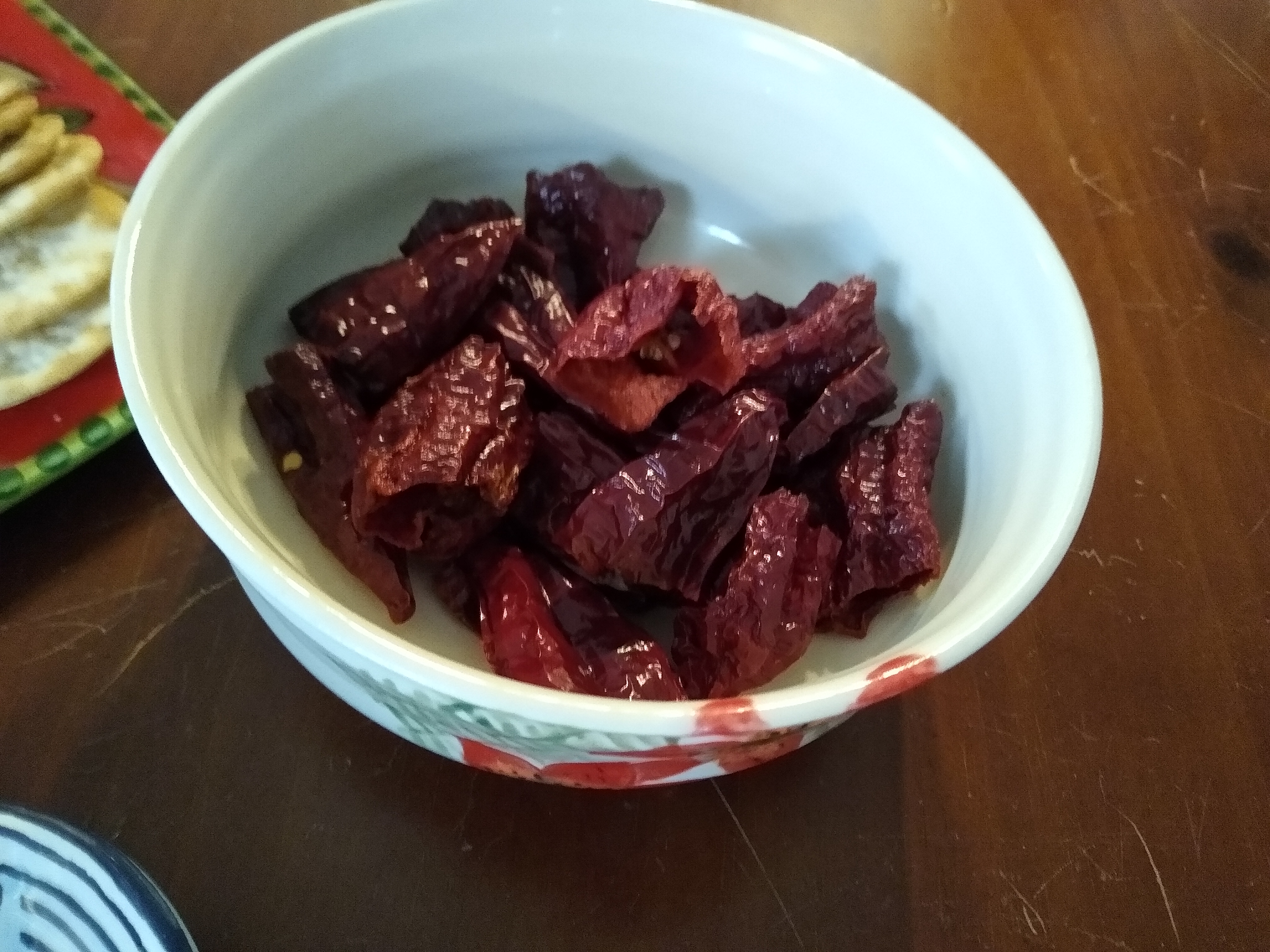
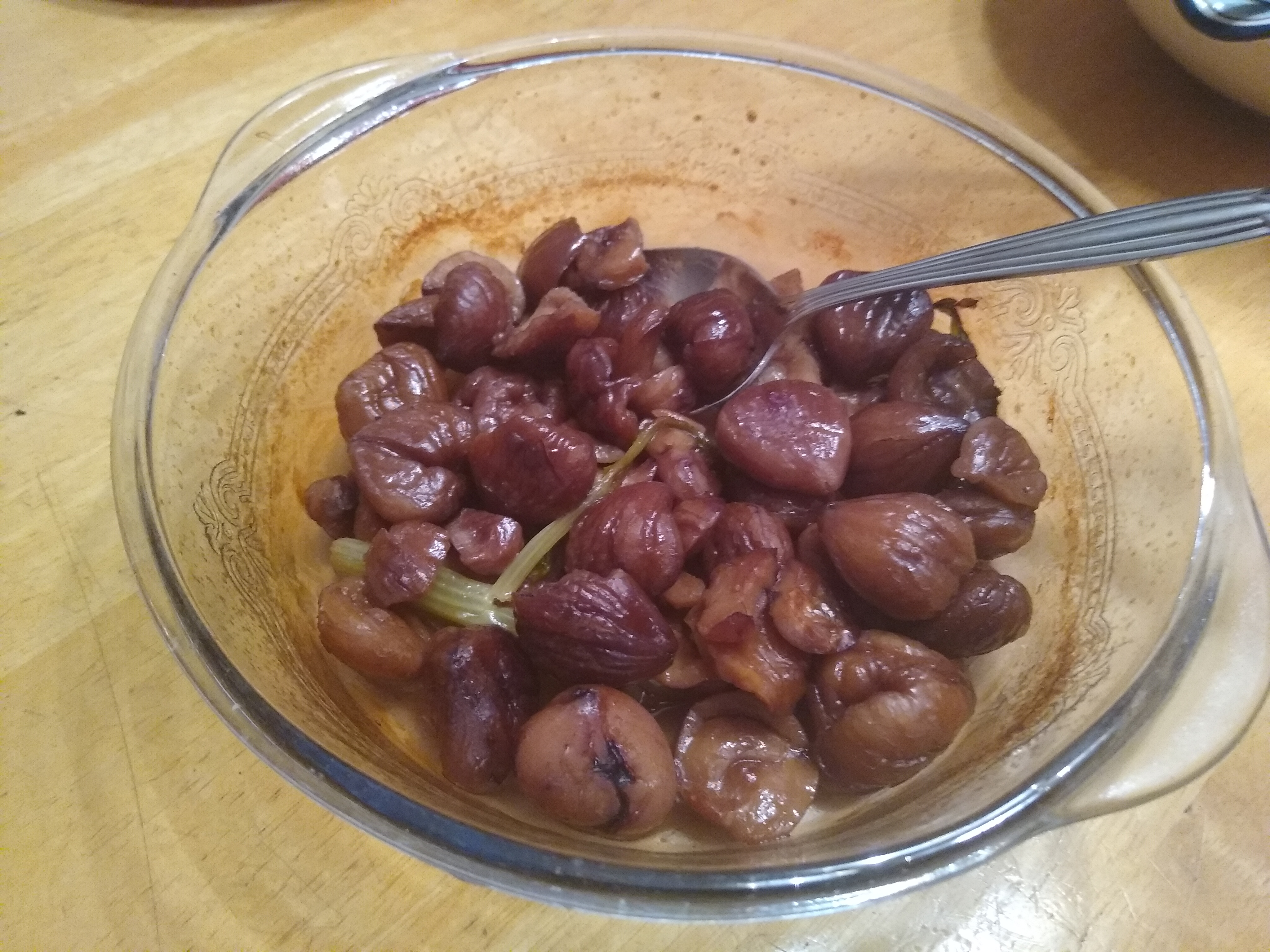 This is a delicious cool-weather dish to accompany a rich meat dish, or just on its own. It's a classic accompaniment to roast goose, and it's fine with roast turkey, too, especially for a holiday table!
This is a delicious cool-weather dish to accompany a rich meat dish, or just on its own. It's a classic accompaniment to roast goose, and it's fine with roast turkey, too, especially for a holiday table!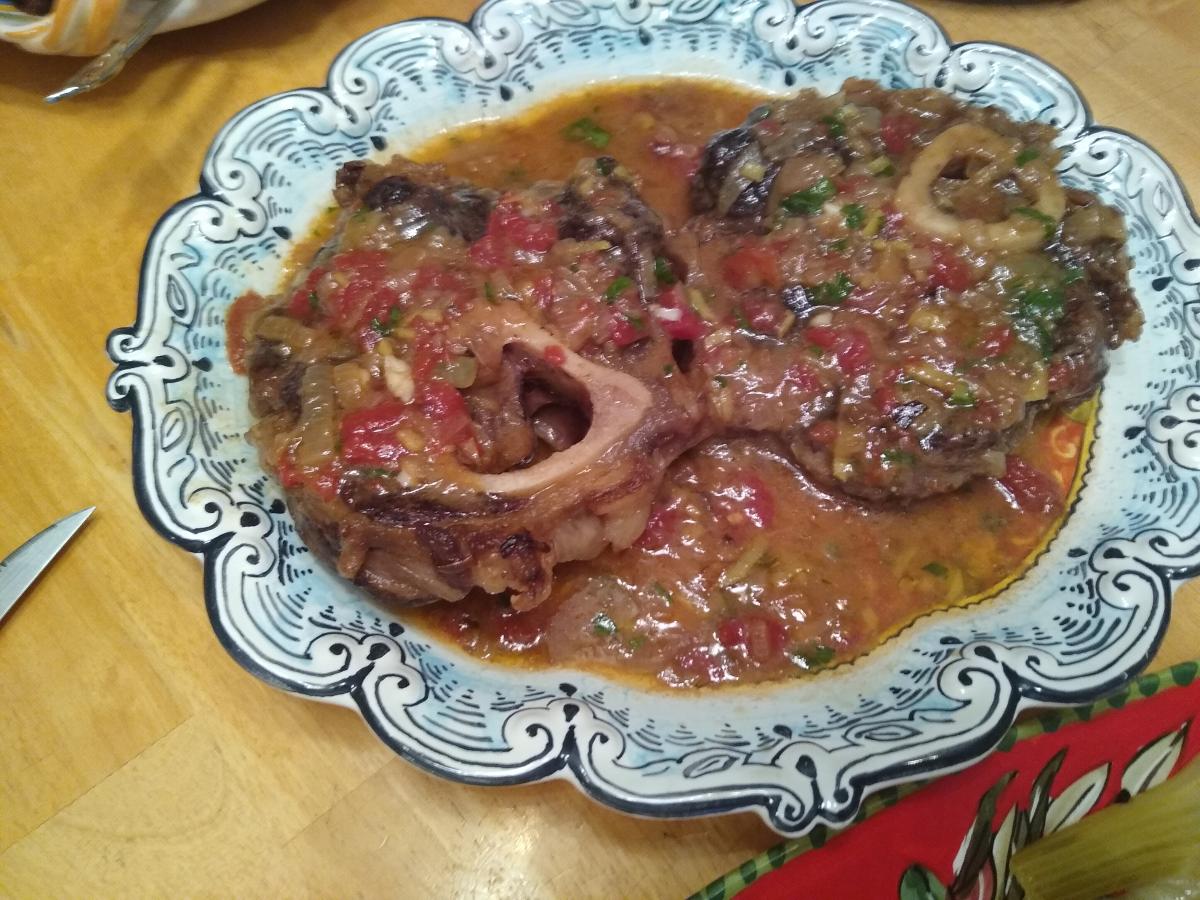 This Lombard classic is beef or veal shank slow-cooked until meltingly tender, and then served with a savory sauce and a contrasting zippy lemon gremolata. It is traditionally served with the beautiful golden
This Lombard classic is beef or veal shank slow-cooked until meltingly tender, and then served with a savory sauce and a contrasting zippy lemon gremolata. It is traditionally served with the beautiful golden 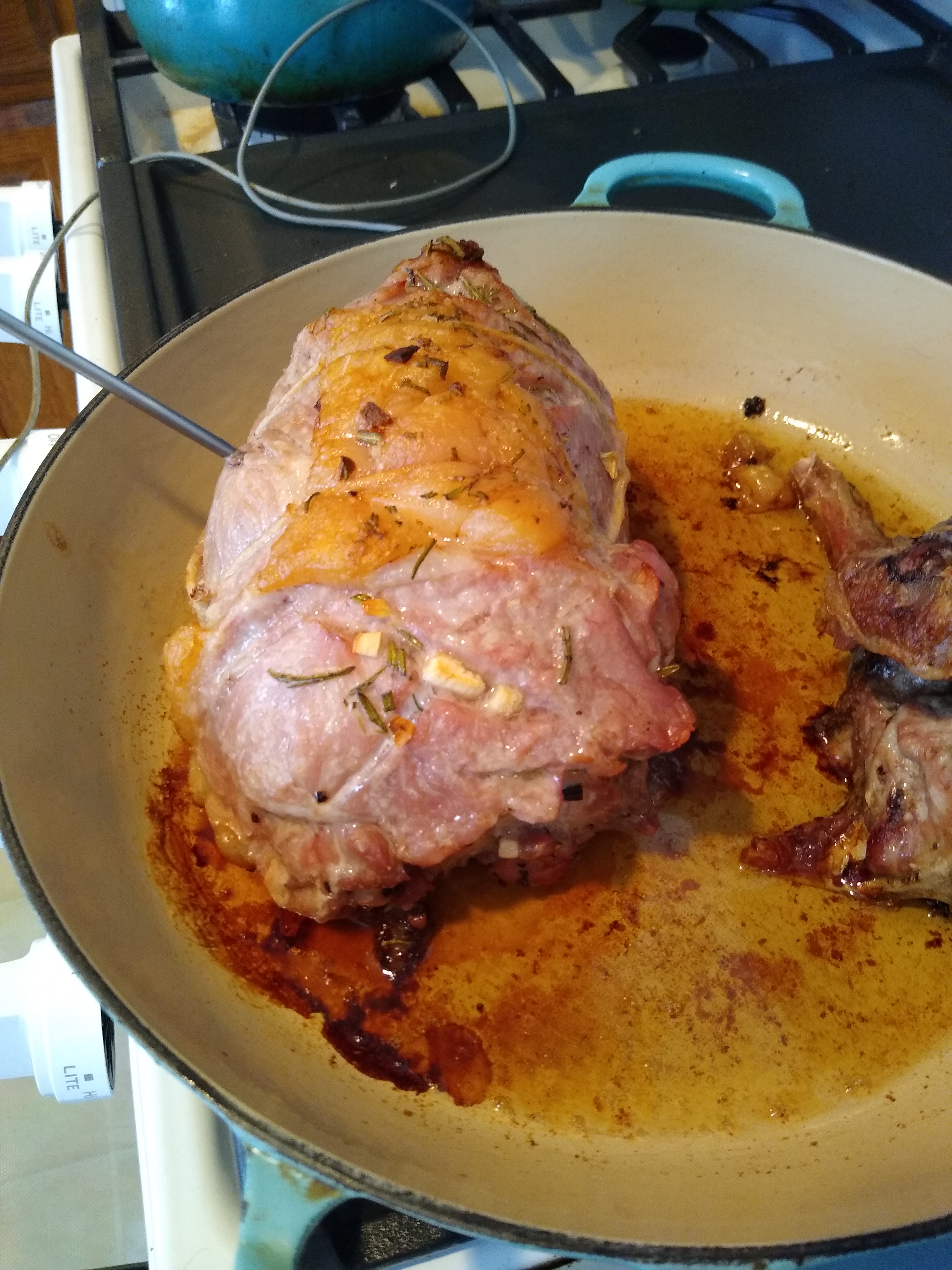 This is a classic Florentine pork roast of Tuscany, Arista alla Fiorentina. Like much Tuscan food, it has few ingredients so they must be of top quality.
This is a classic Florentine pork roast of Tuscany, Arista alla Fiorentina. Like much Tuscan food, it has few ingredients so they must be of top quality.  This is a simple vegetarian dish. According to the Accademia Italiana della Cucina, it's "typical of Caserta", a humdrum little town northeast of Naples with an immense and fabulous palace and gardens. I don't know why this simple dish has such specific roots, but there you have it. It's delicious in any event.
This is a simple vegetarian dish. According to the Accademia Italiana della Cucina, it's "typical of Caserta", a humdrum little town northeast of Naples with an immense and fabulous palace and gardens. I don't know why this simple dish has such specific roots, but there you have it. It's delicious in any event.